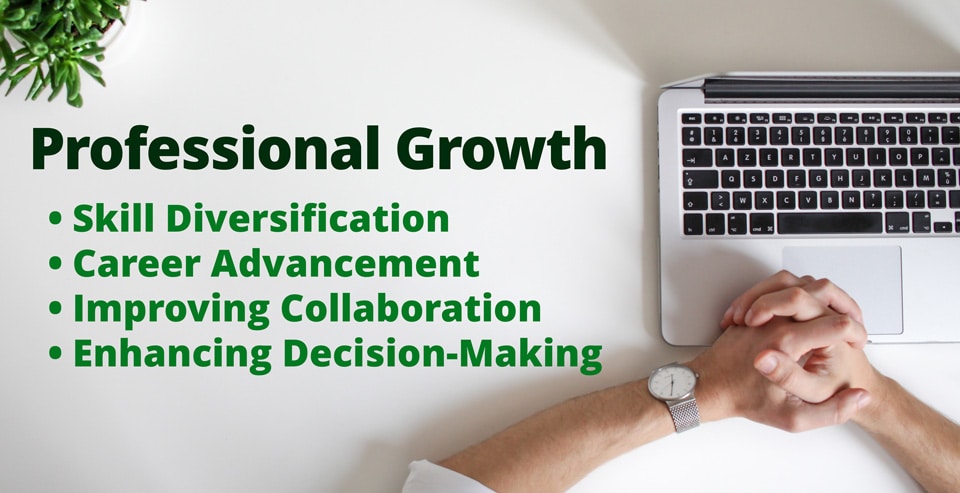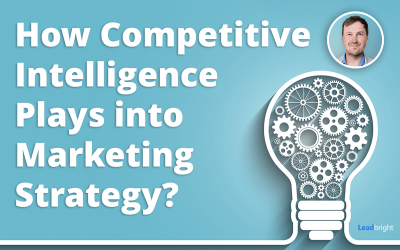How Cross-Functional Approach Fuels Professional and Personal Development?

From overcoming implementation challenges to future perspectives, this comprehensive guide offers valuable insights into leveraging cross-functionality for success, backed by real-life examples and expert opinions.
You can always do the safe dance and wear only one hat or no hats at all or you can take a chance. Here’s The Safety Dance by Men Without Hats to get you in the mood.
Understanding the Cross-Functional Approach
The cross-functional approach is a strategic method in which a team comprises members from different functional areas of an organization, fostering collaboration, and knowledge sharing. This approach offers numerous benefits including improved communication, innovative solutions, and increased efficiency. To successfully implement this approach, it’s essential to have a clear understanding of the team’s objectives, roles, and responsibilities, coupled with strong leadership.
Cross-Functional Approach Definition
Undeniably, gaining a clear understanding of the cross-functional approach is crucial for effective collaboration and productivity in modern business environments. This approach leverages functional diversity within teams to encourage innovative solutions and improve operational efficiency. It involves restructuring the traditional organizational structure, shifting the focus from individual departments to holistic team dynamics.
Different leadership styles come into play, facilitating communication and fostering an environment where everybody feels heard and valued. By breaking down silos and promoting interdisciplinary collaboration, the cross-functional approach enhances not only the productivity but also the personal development of team members. The shared knowledge and skills within the team lead to a richer, more intimate working environment where personal and professional growth is nurtured. This is the essence of the cross-functional approach.
Benefits of Cross-Functionality
Five key benefits of cross-functionality include enhanced communication, improved decision-making, increased innovation, higher flexibility, and accelerated professional development. Cross-functional innovation thrives in a setting where team diversity is valued. Varied skill sets and experiences foster a rich environment ripe for novel ideas.
Interdepartmental cooperation, a cornerstone of cross-functionality, breaks down silos, enabling seamless information flow and more informed decisions. Organizational agility is elevated by cross-training benefits, as team members can adapt and respond efficiently to unexpected shifts.
Most importantly, the cross-functional approach cultivates an atmosphere of constant learning. Individuals, through diverse team interactions, broaden their understanding beyond their specialized roles. This not only boosts professional development but also nurtures a sense of personal growth and satisfaction, enhancing workplace fulfillment.
Implementing Cross-Functional Approach
Successful implementation of a cross-functional approach requires clear communication, shared objectives, and a strong commitment to collaboration across various departments. It is about fostering robust team dynamics, where every team member appreciates the value they bring and understands their role within the broader project management scope. Cross-functional leadership plays a crucial role in this, ensuring that each department works in tandem towards a common goal. The adoption of Agile methodologies further enhances this approach, providing the flexibility to adapt to evolving market demands while maintaining productivity. Technology integration is another vital aspect, streamlining operations and facilitating better synergy across teams. Thus, a cross-functional approach, when correctly implemented, can create an environment that fosters both professional and personal development.
The Role of Cross-Functional Approach in Professional Growth

The cross-functional approach plays a crucial role in professional growth by providing opportunities for skill diversification. It facilitates career advancement by exposing individuals to different areas of an organization, thereby enhancing their decision-making abilities. Moreover, it improves collaboration skills by encouraging interaction and communication with a diverse array of professionals.
Skill Diversification
Understanding the importance of skill diversification involves recognizing the potential of a cross-functional approach in accelerating professional growth. Skill broadening is essential, allowing for the nurturing of creativity and fostering a multidisciplinary learning environment. The diversification benefits are enormous, encouraging a more holistic perspective while enhancing career resilience. It’s not just about becoming a jack of all trades, but rather about developing a robust, adaptive skill set that can weather various professional storms. In an intimate setting, we can discuss how a diversified skill set can not only make us more marketable but also enrich our personal lives. It’s about evolving as professionals and individuals, breaking free from silos, and embracing a more integrated, multifaceted approach to our careers and lives.
Career Advancement Opportunities
In today’s competitive landscape, countless career advancement opportunities exist for professionals who adopt a cross-functional approach, yet it requires proactive learning and a willingness to step outside of one’s comfort zone. These opportunities present themselves in the form of promotion pathways and leadership training, both of which can be accessed through mentorship programs.
These programs amplify employee engagement by fostering an environment that encourages personal and professional growth. Moreover, it equips individuals with the skills to navigate salary negotiations effectively. This holistic development, fueled by a cross-functional approach, not only enhances an individual’s skill set but also establishes a sense of belonging and value within the organization. Hence, it is imperative for professionals to explore this multidimensional approach for their career advancement.
Improving Collaboration Skills
Enhancing one’s collaboration skills, a critical component of professional development, necessitates adopting a cross-functional approach, and it can dramatically impact career progression positively. Building Trust is the foundation of this approach. Trust nurtures an intimate atmosphere, allowing individuals to feel safe while sharing ideas and expressing concerns. This openness promotes Transparency and Encourages Creativity, fostering an environment where innovative solutions can thrive. Moreover, Conflict Management becomes easier with open communication and respect for diverse perspectives. Finally, Establishing Accountability ensures that each team member understands their role and responsibilities, leading to enhanced productivity. Thus, a cross-functional approach not only improves collaboration skills but also fosters personal growth.
Enhancing Decision-Making Ability
A measurable improvement in decision-making ability can be achieved by leveraging a cross-functional approach, which provides multiple perspectives and insights, thereby fostering balanced and well-informed choices. Understanding and utilizing decision-making models is fundamental in this process, as it helps to structure thoughts and mitigate cognitive biases. Emotional intelligence, another crucial aspect, allows us to interpret and manage our emotions and those of others, leading to more empathetic and effective decisions. Decision-making tools, such as SWOT analysis or decision trees, can further aid in evaluating options and potential outcomes. Lastly, considering the ethical dimensions of our choices ensures that we act with integrity, leading to decisions that respect the values and rights of all involved. Together, these elements form a comprehensive framework for improved decision-making.
How Cross-Functionality Enhances Personal Development

Cross-functionality in a professional setting fosters skill diversification which contributes significantly to personal development. It enhances problem-solving capabilities and communication skills as individuals are exposed to a variety of perspectives and methodologies. Moreover, the need to function in different roles increases adaptability, a key attribute for personal growth and success.
Improved Problem-Solving
Enhancing problem-solving capabilities through cross-functional experiences significantly contributes to one’s personal and professional development. This approach fosters the creation of innovative solutions, by blending diverse perspectives, which naturally stimulates a creativity boost.
Often, conflicts arise in the workplace due to a lack of understanding or differences in viewpoints. The cross-functional method aids in conflict resolution, by encouraging empathetic and strategic thinking. It allows individuals to step into another’s shoes, thereby understanding their challenges, and working collaboratively to overcome them.
Moreover, this strategy enhances strategic thinking capabilities, as it necessitates seeing the bigger picture. It fosters the ability to strategize for the future, considering multiple factors and potential outcomes. In essence, cross-functional experiences are a powerful tool for growth, both personally and professionally.
Enhanced Communication Ability
Skillful navigation of workplace dynamics significantly amplifies one’s communication ability, a vital byproduct of cross-functional experiences. Communication styles evolve through exposure to diverse perspectives, fostering a culture of information sharing. This intimate environment nurtures effective listening, an often overlooked but critical component of communication.
Non-verbal communication, which includes body language and visual cues, becomes more nuanced with cross-functional experiences. One learns to interpret and respond to these cues, thus improving their ability to connect at a deeper level.
Conflict resolution is another area that benefits immensely from enhanced communication ability. The understanding of individual communication styles enables one to approach conflicts with empathy and tact, resulting in a harmonious, productive workplace. Therefore, a cross-functional approach not only fuels professional development but also personal growth.
Increase in Adaptability
As we delve into the benefits of cross-functionality, it’s clear that it fosters not only professional growth but also personal development, particularly through an increase in adaptability. Cross-functionality promotes adaptability training, imbuing individuals with a flexibility mindset that offers an edge in today’s volatile business landscape. It cultivates change readiness, a skill crucial for both personal and professional scenarios.
Adaptability in leadership is another key benefit. Leaders who can adeptly navigate differing functions can guide their teams more effectively, fostering a sense of unity. This approach also cultivates emotional adaptability. By understanding various functions, individuals become more empathetic, capable of anticipating and responding to colleagues’ emotional states. Cross-functionality, thus, nurtures a holistic form of adaptability, enriching both professional and personal lives.
Skill Diversification
In the context of today’s ever-evolving job market, skill diversification has emerged as a strategic approach to enhance both personal and professional development. The diversification impact is profound, fostering skill variety that extends beyond one’s core competencies. Despite diversification challenges such as mastering a new discipline, the benefits of broadening expertise are substantial.
A diversified skill set not only increases employability but also fosters creativity, adaptability, and resilience. Individuals with a wide array of skills exhibit greater flexibility in their work, adapt faster to changes, and are more likely to innovate. The diversification outcomes stretch beyond career advancement, contributing to personal growth and improved self-confidence.
The Intersection of Professional and Personal Growth Through Cross-Functionality
The intersection of professional and personal growth through cross-functionality presents an intriguing point of discussion. The benefits of a cross-functional approach can be seen in the enhancement of both personal and professional development, creating a well-rounded individual. Balancing these two aspects of growth is essential in today’s multifaceted work environment.
Cross-functionality Benefits
Numerous benefits can be derived from cross-functionality, including increased efficiency, improved communication, and enhanced problem-solving abilities. This approach reshapes Team Dynamics, fostering an environment where diverse skill sets merge and thrive. It influences Leadership Styles, encouraging a more collaborative approach that values every team member’s input. In terms of Project Management, cross-functionality promotes a holistic view of the project, strengthening decision-making processes. The Organizational Structure benefits from a cross-functional approach, as it breaks down silos and encourages a more integrated working environment. Conflict Resolution is also enhanced, as the diverse perspectives help in identifying and addressing issues more effectively. These numerous benefits make cross-functionality a vital approach for both professional and personal growth.
Balancing Professional, Personal Growth
Undoubtedly, balancing professional and personal growth becomes more achievable when embracing a cross-functional approach, as it simultaneously enhances skill sets and facilitates holistic development. It is essential to maintain personal priorities while fostering a growth mindset, crucial for any successful endeavor. Time management is a critical skill in this process, allowing for a balance between work and self care importance.
Understanding the necessity of setting boundaries is also paramount. These boundaries protect one’s personal space, preventing professional obligations from overshadowing personal needs. This harmonious balance between professional and personal growth contributes to a more rounded individual, proficient in diverse areas. Consequently, a cross-functional approach not only fuels growth but also ensures that this growth is sustainable and fulfilling, giving equal importance to all aspects of life.
Cross-Functional Approach in Marketing Strategy

The cross-functional approach in marketing strategy refers to the collaborative effort of multiple departments working together towards a common goal. This methodology can yield significant benefits such as improved communication, innovative solutions, and faster decision-making processes, yet it may also present certain challenges like potential conflicts and misalignments. Analyzing successful implementation cases and looking towards the future of cross-functionality can provide valuable insights into how this approach can be effectively utilized.
Defining Cross-Functional Marketing
In the realm of business strategy, cross-functional marketing stands as a potent approach that involves collaboration between different departments such as sales, marketing, and customer service to achieve a unified marketing goal. This approach fosters marketing diversity by tapping into the unique skills and perspectives of each department, sparking an innovation drive that fuels the overall company growth. It hinges on effective inter-departmental communication, allowing for a strategic alignment of company objectives.
Cross-functional marketing also promotes customer-centric tactics. By integrating the insights from all departments, it ensures that the marketing strategies implemented are in tune with the needs and preferences of the customers. This holistic approach not only optimizes business performance but also enhances the customer experience, thereby fostering a strong and enduring customer relationship.
Benefits in Strategy
Employing a cross-functional approach in marketing strategy offers myriad benefits, including the enhancement of team collaboration, customer-centric decision making, and the elevation of overall business performance. The beauty of this methodology lies in the seamless functionality integration across various departments, fostering an atmosphere of developmental synergies. When everyone works in unison, strategy optimization becomes more attainable, and diversified approaches are explored more effectively, leading to innovative solutions.
The intimacy of the cross-functional approach lies in its ability to bring together different perspectives and skills, creating a potent mix for strategic development. This integrated philosophy champions collective growth and nurtures an environment where everyone is encouraged to contribute, thereby optimizing the overall strategy. In essence, the cross-functional approach is a catalyst for both professional and personal development.
Potential Challenges
Despite its numerous advantages, the cross-functional approach in marketing strategy also presents potential challenges, such as communication breakdown and role ambiguity, which require diligent management and effective leadership to overcome. Barrier Identification becomes crucial in pinpointing areas of resistance and breakdowns. Resistance Management, thus, holds the key to handle these barriers, ensuring smooth workflow and collaboration.
Training Necessities must not be overlooked as they equip teams with skills to handle interdepartmental intricacies. Conflict Resolution, a significant aspect, resolves disagreements, ensuring team harmony. Role Clarity, finally, eliminates ambiguity, fostering a sense of ownership and responsibility. Each of these elements, when effectively managed, helps navigate the challenges of a cross-functional approach, promoting both professional and personal growth.
Successful Implementation Cases
Drawing from successful implementation cases, we can observe the tangible benefits of a cross-functional approach in marketing strategy, and also discern the strategies that facilitate overcoming potential challenges. Cross-functional leadership has been instrumental in breaking down organizational silos, fostering team diversity and accelerating innovation. This leadership style encourages diverse perspectives, sparking creativity and opening avenues for innovation acceleration. Team diversity, another key factor, brings a rich blend of ideas, experiences, and skills, propelling an organization towards its goals. Agile methodologies, integrated into the cross-functional approach, enhance flexibility and responsiveness, key in today’s volatile market. In essence, a cross-functional approach, when executed with precision, can become a powerful tool in driving organizational and personal development, creating a harmonious, productive work environment.
Future of Cross-Functionality
Where will the future of cross-functionality lead us in terms of business growth and innovation, especially considering the rapid changes in the marketing landscape? Cross-functional innovation and agile transformation are at the forefront of this evolution. By breaking down organizational silos, businesses are able to foster cross-disciplinary synergy, propelling them towards unprecedented growth and innovation. Cross-functional leadership plays a pivotal role in this transition, encouraging collaboration and shared understanding across different functional areas. The future of cross-functionality promises a business environment that values and nurtures diversity of thought and experience. This will lead to the development of more comprehensive and inclusive strategies, ultimately creating a more resilient and adaptable business model.
Real-Life Examples of Cross-Functional Successes, aka Taking Chances

There are numerous real-world instances where cross-functional collaboration has led to significant success. An exploration of these stories could provide useful insights into the impact of such an approach on employee development. Furthermore, it is important to consider the benefits of a cross-functional approach in various organizational contexts.
Successful Cross-Functional Team Stories
Often, the most inspiring examples of success stem from cross-functional team collaborations that have effectively utilized diverse skills and perspectives. When diverse teams are guided by varying leadership styles, innovation is given a significant boost. It becomes a melting pot of ideas and solutions, fostering an environment conducive to growth and development. Conflict resolution plays a crucial role in maintaining healthy team dynamics. Differences are inevitable in a diverse group, but effective conflict resolution ensures these differences catalyze innovation rather than discord. The magic happens when each member’s unique strengths are harnessed to contribute to the collective goal. Successful cross-functional team stories are a testament to this synergy, proving that when individual talents are woven together, they form a tapestry of success that is greater than the sum of its parts.
Impact on Employee Development
During the course of their tenure, employees who actively participate in cross-functional teams have reported substantial professional growth and skill development. This can be attributed to the dynamics of employee empowerment, where individuals are given autonomy and trust, fostering motivation and engagement.
Different leadership styles also play a significant role. Transformational leaders, for instance, inspire and challenge their teams, leading to enhanced performance metrics. Furthermore, motivation theories such as Maslow’s Hierarchy of Needs and Herzberg’s Two-Factor Theory underline the importance of fulfilling both intrinsic and extrinsic needs for employee satisfaction and growth.
Lastly, a supportive organizational culture, one that values learning and collaboration, can significantly enhance the benefits of cross-functional involvement. Hence, cross-functional teams can be a catalyst for personal development and professional progress.
Cross-Functional Approach Benefits
We have seen the theoretical benefits of a cross-functional approach, and now let’s delve into real-life examples that illustrate its success. When applied correctly, Functional Synergy is achieved, enhancing cooperation and communication within teams. However, it’s not without its challenges. Methodology Critiques and Disadvantages Analysis reveal issues such as Organizational Resistance and the need for strong Cross-Functional Leadership.
Companies like Spotify have successfully implemented this approach, fostering an environment of shared responsibility and collective growth. Having diverse perspectives allows for innovative solutions, overcoming the disadvantages. Despite resistance, the leadership successfully navigated through the challenges, emphasizing the importance of embracing new methodologies for better outcomes. This illustrates how a cross-functional approach not only fuels professional development but also contributes to personal growth.
Overcoming Challenges in Implementing Cross-Functional Strategies
Successfully implementing cross-functional strategies can be fraught with potential hurdles, such as unclear roles and ineffective communication. A comprehensive understanding of resource allocation strategies can greatly enhance the process, ensuring that each team member has the tools necessary to fulfill their role. Addressing role ambiguity and promoting effective team communication can also be instrumental in overcoming these challenges.
Identifying Potential Hurdles
One must be vigilant in pinpointing potential obstacles that may hinder the successful implementation of cross-functional strategies. Barrier Identification is a crucial first step in this process, it enables us to identify and understand the nature of the impediments that might disrupt our journey. Hurdle Analysis follows, providing a detailed examination of these barriers, determining their severity and devising potential solutions. Obstacle Recognition, Challenge Detection, and Problem Spotting are all integral components of an effective risk management strategy. They help us anticipate and prepare for difficulties, fostering a proactive rather than reactive approach. The intimacy that comes from understanding these complexities not only aids in overcoming them but also promotes personal and professional growth, thus enhancing the success of cross-functional strategies.
Enhancing Team Communication
How, in the context of implementing cross-functional strategies, can we enhance team communication, and what tools or strategies might be most effective in achieving this goal? The key lies in addressing Communication Barriers through honing Listening Skills and enhancing Emotional Intelligence. These help in understanding and managing Interpersonal Dynamics more effectively. Emotional Intelligence empowers us to perceive, use, understand, and manage emotions positively. This, in turn, influences our communication, decision-making, and problem-solving capabilities. Feedback Mechanisms, such as regular team meetings, surveys, or suggestion boxes, can also play a vital role in enhancing team communication. They provide a platform to express ideas, insights, or concerns, fostering a culture of openness and trust. Thus, these strategies can significantly improve team communication and contribute towards professional and personal development.
Resource Allocation Strategies
Both optimal and efficient resource allocation strategies are crucial in overcoming the challenges associated with the implementation of cross-functional strategies, yet many organizations struggle to find a balance between the two. The concept of resource reallocation, if executed properly, results in efficiency improvement, which in turn bolsters strategic prioritization. However, allocation ethics should never be compromised during this process. It is imperative for the leadership to ensure fair and equitable distribution of resources. Embracing resource optimization techniques is not just about maximizing outcomes, but also about fostering a culture of fairness, trust, and mutual respect. As we delve deeper into this discussion, let’s remember that our collective goal is to create a harmonious, productive environment where every team member feels valued and supported.
Addressing Role Ambiguity
The issue of role ambiguity often arises in the context of implementing cross-functional strategies, posing a significant challenge for both management and employees. This ambiguity impact is felt deeply, creating a sense of unclear responsibilities, thus hindering both professional and personal development.
The key to ambiguity resolution lies in defining roles with precision and fostering role clarity. A clear understanding of one’s role leads to a sense of ownership, boosting confidence and productivity. Management should invest in consistent communication, delineating clear expectations and responsibilities. This not only reduces tension but also fosters a nurturing environment where every team member feels valued. Addressing role ambiguity is pivotal in creating a harmonious workspace, driving both personal growth and organizational success.
Future Perspectives: The Evolving Role of Cross-Functionality in Professional and Personal Development

As we look towards the future, the evolving role of cross-functionality in both professional and personal development promises a significant transformation. The impact of cross-functionality as a future-oriented strategy could affect the way we navigate our careers and personal growth trajectories. To understand this further, we need to consider the shifts in personal development practices and conduct an analysis on how the role of cross-functionality is evolving.
Evolving Role Analysis
In our current discussion, we are delving into the intricacies of evolving role analysis and examining how a cross-functional approach can lead to significant professional and personal development. Role diversification, a key component of this analysis, fosters adaptability, promoting a robust skillset among team members. Performance assessment, central to understanding individual contributions, is enhanced by leadership dynamics that encourage open dialogue and conflict resolution. These elements are critical in maintaining a harmonious environment conducive to growth. Furthermore, motivational strategies are vital in sustaining enthusiasm and commitment, ultimately optimizing productivity and fostering personal development. The integration of these aspects, through a cross-functional approach, facilitates a comprehensive understanding of evolving roles within an organization, thereby catalyzing both professional advancement and personal evolution.
Cross-Functionality’s Future Impact
Cross-functionality is expected to revolutionize the professional landscape in the future, and concurrently, it could significantly influence personal development strategies, shaping a more versatile, well-rounded workforce. The future forecasts suggest that the technological implications of cross-functionality will redefine how tasks are executed, fostering cross-functional leadership.
We’re envisaging a world where cross-functionality ethics would be integral to corporate social responsibility, creating a ripple of global effects. This approach would not only enhance work efficiency but also imbibe a sense of collective responsibility and shared goals. The intimacy of this cross-disciplinary collaboration could lead to a significant shift in professional and personal development, intertwining them in an unprecedented manner. It’s an exciting time to witness and be part of this transformative journey.
Personal Development Shifts
Through the lens of cross-functionality, we are beginning to witness a shift toward an era where personal development is no longer an isolated journey, but rather intertwined with our professional growth, leading to a more holistic approach to career progression. This shift is triggered by an increasing recognition of the value of Developmental Milestones in both professional and personal domains. The Mindset Evolution necessary for this integrated approach requires Habit Formation reinforced by regular Self Reflection Practices.
Intimate conversations within our professional circles regarding these development shifts are vital. Sharing our journey with others fosters a supportive environment, where each person’s growth contributes to a collective advancement. Thus, cross-functionality not only bolsters our individual capabilities but also strengthens our professional community significantly.
Conclusion
The cross-functional approach, with its emphasis on collaboration and knowledge sharing, offers substantial potential for both professional and personal development. Further research and real-world application will continue to elucidate how this strategy can best be implemented and leveraged for optimal growth. The future of professional and personal development will likely be increasingly intertwined with cross-functionality, offering exciting possibilities for those willing to embrace this innovative approach. Bottom line – have fun because you can dance if you want to:



